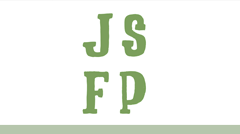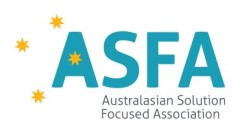Abstract
Solution Focused methods are often interpreted by different practitioners with a degree of flexibility and adaptation to specific practice settings (Lehmann & Patton, 2012). This flexibility is one of the features that makes SFBT a very client-centered approach and has been highlighted as one of the key aspects of successful co-construction of desired outcomes with clients (Franklin et al., 2017). This collaborative approach is possible due to SFBT’s utilization of social constructionist principals in the solution-building process (Blundo & Simon, 2015). While encouraging flexibility of implementation of SFBT, identifying the main tenets of the therapy, including specific techniques and mindsets is helpful to researchers who are interested in determining SFBT’s success in certain clinical and research efforts (Lehmann & Patton; Trepper et al., 2012). To help with this process, members of the Solution Focused Brief Therapy Association (SFBTA) created a treatment manual that outlined these major tenants to serve as a guide and to reach a consensus about how to understand and implement SFBT (Trepper et al.). In publishing their SFBT fidelity instrument, Lehmann and Patton recommended that the field of SFBT focus more seriously on the issues of treatment fidelity in SFBT practice and research. However, continued discussion on the topic has been limited in the peer-reviewed, published SFBT literature. To continue this discussion among SFBT researchers and practitioners, the process for planning, monitoring and reporting fidelity to SFBT in the Solution Focused Wellness for HIV Intervention for women (SFWH) will be presented. The SFWH fidelity monitoring process will be explained in the context of both common SFBT fidelity processes and the latest accepted behavioral intervention research guidelines for the fidelity process.
This article is the third in a series of articles that outlines the research process of the SFWH. The first article explained the process of developing the intervention with expert feedback from SFBT and HIV researchers as well as women living with HIV (Yates et al., 2019). The second article explained the results of a pilot study conducted to examine the effect of the intervention on a small group of women living with HIV (Yates & Mowbray, 2020). This third article will focus on the SFBT fidelity process adopted during the pilot study.
SFWH is a client-centered group counseling intervention that was implemented in community-based HIV case management agencies with the aim of improving the wellness of participants. During pilot testing, a comprehensive approach to fidelity monitoring was adopted to ensure inclusion of each therapeutic component of the intervention (Yates & Mowbray, 2020). This approach was based on guidelines outlined by the Behavior Change Consortium (BCC) of the National Institutes of Health and Tomioka & Braun’s Four-Step Protocol for Assuring Replication with Fidelity (2013). This comprehensive approach to fidelity helped to ensure that the results of the pilot study fully explained the effect the intervention had on the wellness outcomes of the women who participated. The approach also aimed to honor the flexible nature of SFBT as it was originally outlined (De Jong & Berg, 2002) as well as incorporating the major tenets of the method outlined in the SFBTA’s published treatment manual (Trepper et al., 2012).
The treatment manual used for this pilot study was designed to be a guide for the counselor based on the three mindsets and eight techniques detailed in the Solution Focused Brief Therapy Association’s published treatment manual (Trepper et al., 2012) as well as client and researcher expert input about living with HIV and multidimensional wellness. The SFBT manual describes an expected level of flexibility in the application of the techniques due to the collaborative nature of SFBT. However, the mindsets and techniques have been presented formally according to the intentions of the original SFBT authors, and the Solution Focused Wellness for HIV (SFWH) intervention development process sought to honor that work by using that manual as a basis.
The focus of this article is on the fidelity to SFBT including how it was measured and the frameworks for the fidelity monitoring process itself. To explain the process of planning, monitoring, and reporting fidelity in this project, we will first present the frameworks we used to understand best practices in intervention fidelity monitoring in behavioral research.
Recommended Citation
Yates, Helen Taylor and Lee, Spencer Elise
(2021)
"Fidelity Monitoring in the Solution Focused Wellness for HIV (SFWH) Intervention for Women,"
Journal of Solution Focused Practices: Vol. 5:
Iss.
2, Article 4.
Available at:
https://oasis.library.unlv.edu/journalsfp/vol5/iss2/4
Included in
Clinical and Medical Social Work Commons, Counseling Commons, Social Work Commons, Women's Health Commons




